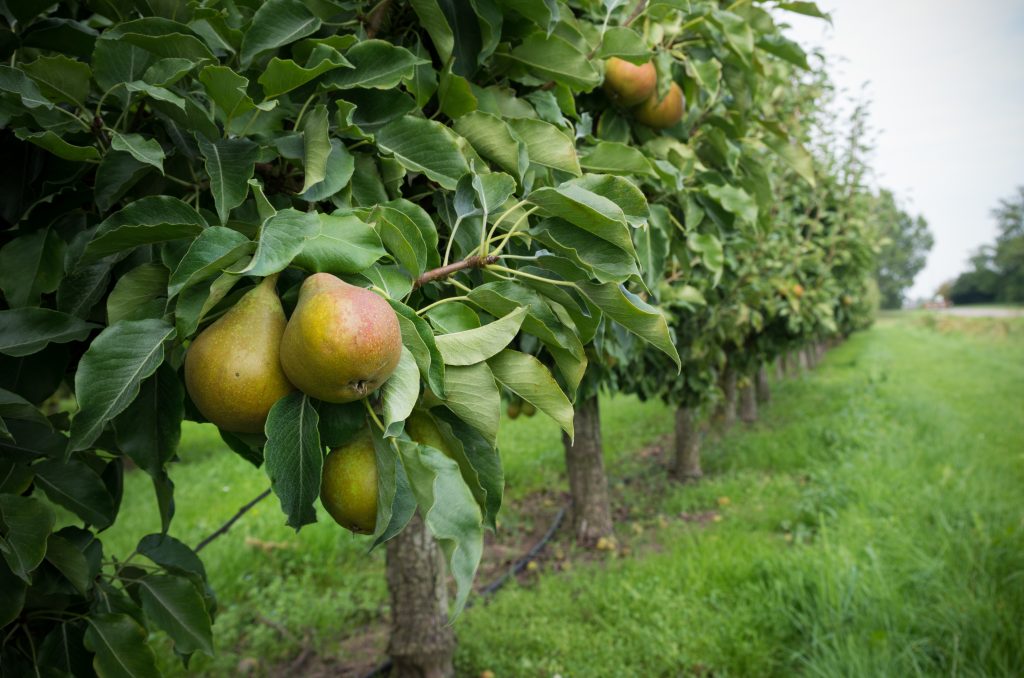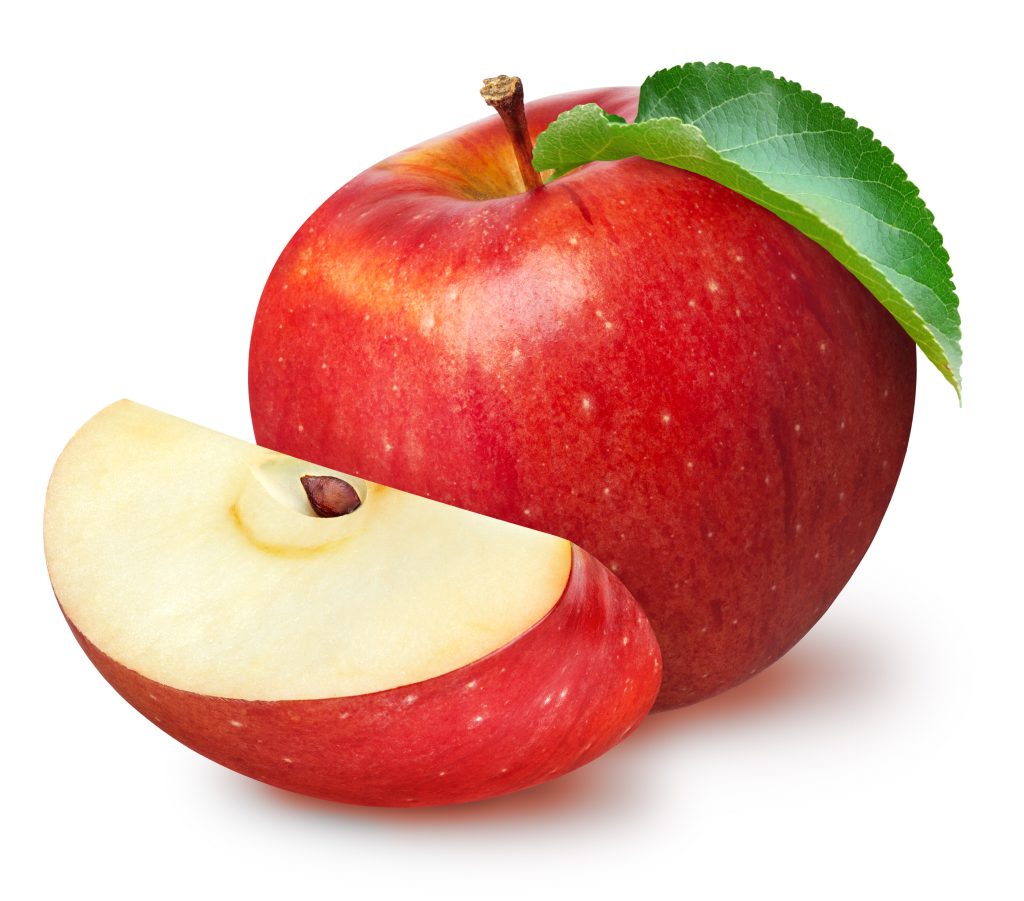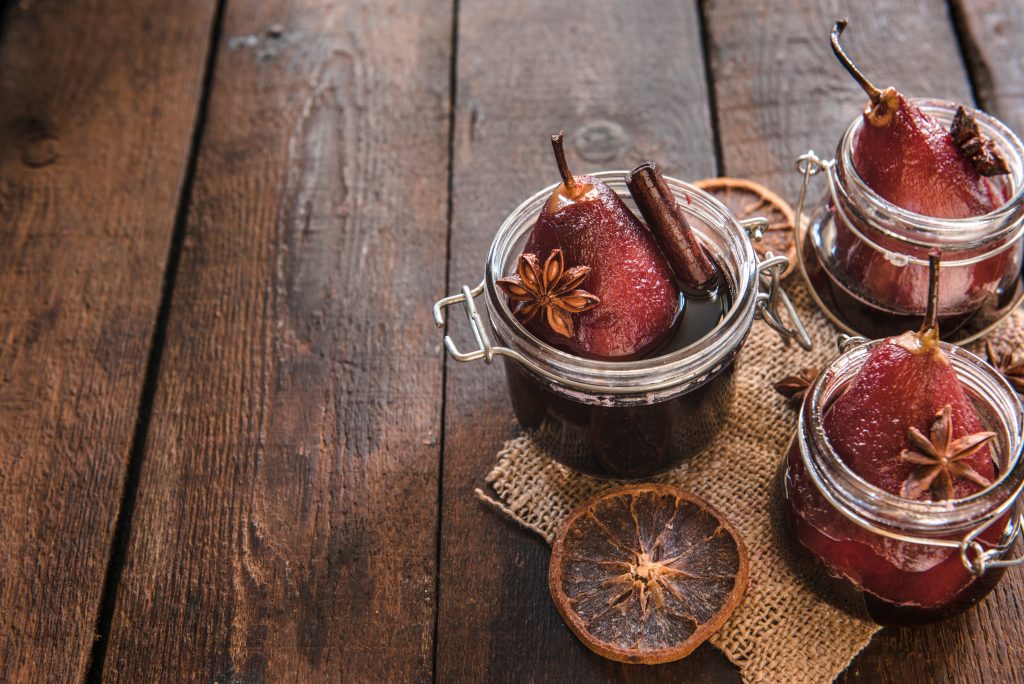Pears are a sweet and juicy fruit part of the Rosaceae family. They come in various colors and flavors and are a good source of fiber, vitamins, and minerals. Pears are commonly eaten fresh but can also be used in cooking and baking.
Table of Contents
What is a Pear?
A pear is a type of fruit belonging to the Rosaceae family, including apples, peaches, quince, and strawberries. It is commonly known as Pyrus communis and is native to Europe and Asia. Pears are also called the “butter fruit” because of their soft, buttery texture when ripe. The pear fruit tree is popular worldwide and a favorite of growers because it adapts to most temperate climates.
Pears come in different shapes, sizes, and colors, with the most common varieties being green, yellow, and red. They have a round base that narrows to a curved top, ending in a small, pointed stem. The skin of a pear is usually thin and smooth, with a matte finish that varies in color from light green to golden yellow to deep red.
Pears are sweet and juicy fruit with a delicate and slightly grainy texture. They have a mild taste with a subtle hint of citrus and floral notes. The flesh of a ripe pear is soft and fragrant, making it an excellent choice for eating fresh or for use in a wide range of recipes, including salads, baked goods, and desserts.
Some of the most popular varieties of pears include Bartlett, D’anjou pear, Bosc, Comice pears, Concorde, Nashi (also known as Asian pear or apple pear), Bosc pear, Forelle, and Seckel pear.
The History of Pears
Pears have a long and exciting history that dates back thousands of years. The fruit is believed to have originated in Asia and was later introduced to Europe, where it became widely cultivated. In the Middle Ages, pear trees were grown in orchards throughout Europe.
Pears were highly valued for their medicinal properties and were used to treat various ailments. The ancient Greeks and Romans were particularly fond of the fruit:
- In Greek mythology, the poet laureate Homer hailed pears as a divine gift.
- Pomona, the Roman goddess of fruit, was honored for her association with the versatile and long-lasting pear.
- Pears were an inspiration for Renaissance artists.
In the 17th and 18th centuries, pears were brought to North America by European settlers. The fruit was well-suited to the climate and soil of the eastern United States, and it quickly became a popular crop. Today, there are over 3,000 known varieties of pears, which are grown in temperate regions around the world.
Most are now popularly grown in Medford, Oregon, and Washington. The last two states have over 900 pear growers and a substantial annual harvest, almost half (38%) of which are exported to about 50 countries. In addition, the pear was named Oregon’s Official State Fruit, and December became National Pear Month.

What Does a Pear Taste Like?
When eaten raw, a pear has a crisp and refreshing taste with subtle floral and fruity notes. The flavor can range from mildly sweet to very sweet, depending on the ripeness of the pear.
When cooked, pears can have a softer texture and a more pronounced caramel-like sweetness. They can be baked, poached, grilled, or roasted and are often paired with spices like cinnamon, nutmeg, or ginger. Cooked pears can also be used in desserts like pies, tarts, or crumbles or as a topping for oatmeal, yogurt, or ice cream.
The taste of pear can vary depending on the variety, ripeness, and how it is prepared. But pears are generally known for their sweet, juicy, and refreshing flavor.
How to Tell When Pear is Ripe
To tell when a pear is ripe, you can check for several visual characteristics, including:
| Texture | When ripe, a pear should feel slightly soft when you press the flesh near the stem with your thumb. If it is too firm, it’s not yet ripe; if it is mushy, it’s overripe. |
| Firmness | You can also check for ripeness by gently pressing the flesh at the base of the pear. If it yields to gentle pressure, it is ripe. |
| Scent | A ripe pear will have a sweet aroma at the stem end. |
| Smoothness/Roughness | The skin of a ripe pear will feel smooth and velvety to the touch, while an unripe pear will be rougher and harder to the touch. |
| Color | Depending on the variety, a ripe pear can range from light green to yellow and may have a slight blush of red on the side exposed to the sun. |
Note: Consider the variety of pears you are buying. Some types, such as Bartlett pears, are picked when they are still green and ripen off the tree. Other varieties, such as Bosc pears, are picked when ripe and ready to eat.
Are Pears and Apples Related?


Pears and apples are both members of the Rosaceae family, which includes many other fruits such as peaches, plums, cherries, and strawberries. However, there are some distinct differences between them:
| Shape | Apples are generally smaller and rounder than pears, while pears are usually larger and more elongated in shape. |
| Texture | Pears have a distinct, gritty texture, while apples are crunchy and juicy. |
| Flavor | Pears are typically sweeter than apples and have a more floral or buttery taste. |
| Preparation | Apples are commonly eaten raw or used in cooking, while pears are often eaten fresh or used in baking and canning. |
| Shelf Life | Apples have a longer shelf life than pears and can be stored for several months, while pears are more delicate and spoil quickly. |
Cooking with Pears
To prepare pears for cooking:
- Wash them under cool water and then pat them dry.
- Next, cut off the stem and bottom ends of the pear, and use a peeler or a paring knife to remove the skin.
- Cut the pear in half lengthwise and use a spoon or a melon baller to scoop out the seeds and core from the center.
Pears are a versatile fruit that can be cooked in various ways, including poaching, baking, grilling, and roasting. They are commonly used in desserts but can also be used in savory dishes like salads, stews, and sauces. They are used in many traditional cuisines, including French, Italian, and Chinese.

Here are a few examples of dishes that use pears:
Red Wine Poached Pears: Pears are gently simmered in red wine with spices like cinnamon, clovers, and some tart orange peels until tender and fragrant. They can be served alone or as a topping for ice cream or cake.
Pear Bread: This is a tasty and easy-to-make quick bread that combines ripe pears’ sweetness and soft texture with warm, comforting spices like cinnamon. It’s a great way to use any extra pears you have on hand and is perfect for breakfast or a snack.
Pear Pastry Braid: This is a visually stunning and delicious dessert showcasing pears’ sweet, juicy flavor. This tender and flaky pastry goodness is perfect for a special occasion or as an indulgent treat.
Chocolate Pavlova With Spiced Pears: This decadent and elegant dessert combines pavlova’s crisp, delicate texture with chocolate’s rich, intense flavor. Topped with spiced maple-glazed pears and whipped cream, it’s a show-stopping dessert sure to impress.
Savory Baked Pears with Gorgonzola, Walnuts, and Cranberries: This recipe combines the sweetness of pears with the tangy, salty flavor of gorgonzola cheese, the crunch of walnuts, and the tartness of dried cranberries. It’s a perfect appetizer or side dish for a fall or winter meal, and the combination of flavors and textures makes it a standout dish.
How to Store Pears
Here are some of the best storage techniques and expected shelf life for pears:
| On the counter | If the pears are still unripe, you can store them on the counter at room temperature until they ripen. Depending on the variety, pears can take 3 to 7 days to ripen. Once they are ripe, you should eat them within 1-2 days. |
| In the fridge | If you have ripe pears and you’re not planning to eat them right away, you can store them in the crisp drawer of the refrigerator for up to 5 days. |
| Freezer | Pears can also last up to 8 months in the freezer. Start by peeling and slicing the pears. Place them in a single layer on a baking sheet and freeze until solid. Once frozen, transfer them to an airtight container or freezer bag and store them in the freezer. |
| Drying | Dried pears can be a great snack and can be stored for several months. Slice the pears thinly and remove the seeds and stem. Arrange the slices on a baking sheet and dry them in a low-temperature oven (around 140°F) or a dehydrator until they are dry and leathery. |
Nutritional Benefits of Pears
Pears are a great source of nutrients and have numerous health benefits; the most studied one is lowering the risk of type 2 diabetes. They are also low in calories but high in dietary fiber and water content, making them essential for hydration and overall digestion. They are packed with vitamins C, vitamin K, potassium, and antioxidants.
Pears can be great for your gut because they contain soluble and insoluble fiber, which means they help maintain a healthy gut microbiome, preventing obesity and type 2 diabetes.
Pears contain flavonoids that are beneficial for heart health. They can help improve blood pressure and cholesterol levels and may even reduce the risk of stroke and death from cardiovascular disease. These flavonoids are also responsible for reducing the risk of type 2 diabetes.
Where to Purchase Pears
Pears are typically found in most grocery stores, particularly during their peak season, which runs from late summer to early winter, depending on the variety. During this time, you can find various pears, including prevalent types like Bartlett, Bosc, and Anjou.
In addition to grocery stores, you can also find pears at farmers’ markets.
Specialty stores such as health food stores, gourmet markets, and organic food stores may also offer a wider selection of pear varieties, including harder-to-find heirloom varieties. However, these specialty stores may be more expensive than grocery stores or farmers’ markets.

